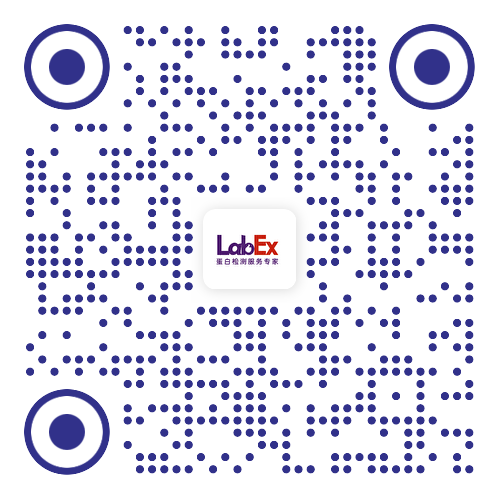Potential role between inflammatory cytokines and Tie-2 receptor levels and clinical symptoms in patients with first-episode schizophrenia
LabEX支持文献- BMC Psychiatry
- 2023
- 3.6
- 2023 Jul 25;23(1)
- Human
- MSD
- 神经系统
- 全血
- 神经系统
- 10.1186/s12888-023-04913-7
Abstract
Background: Schizophrenia (SCZ) is associated with chronic low-grade inflammation, which may be involved in the underlying pathological mechanism of the disease and may influence patient prognosis. We evaluated the differences in serum cytokine and Tie-2 receptor levels between patients with first-episode SCZ and healthy controls and explored the correlation thereof with clinical symptoms.
Methods: Seventy-six participants were recruited for the present study, including 40 patients with first-episode SCZ and 36 healthy controls. Positive and Negative Syndrome Scale (PANSS) and Brief Psychiatric Rating Scale (BPRS) scores, demographic data, and blood samples were collected at baseline. A hypersensitive Meso Scale Discovery (MSD) electrochemiluminescence assay system was used to measure cytokine and Tie-2 receptor levels. Spearman's correlation and stepwise linear regression were used to analyze the data.
Results: Serum interleukin-1β and -4 levels were significantly increased, and Tie-2 levels were significantly decreased, in first-episode SCZ patients as compared to healthy controls. IL-1β levels were positively correlated with total BPRS scores, resistance subscores, and PANSS positive subscores. Furthermore, IL-1β levels were negatively correlated with Tie-2 receptor expression levels. Stepwise linear regression analysis demonstrated that IL-1β levels correlated positively with PANSS positive subscores and BPRS total scores. PANSS negative subscores, general psychopathology subscores, and PANSS total scores had positive effects on the Tie-2 receptor. Receiver operating characteristic (ROC) curve analysis showed that IL-1β and Tie-2 were highly sensitive and specific for predicting first-episode SCZ symptoms and achieving an area under the ROC curve of 0.8361 and 0.6462, respectively.
Conclusion: Our results showed that patients with first-episode SCZ have low-grade inflammation. IL-1β and Tie-2 receptors may be important mediators between inflammation and vascular dysfunction in patients with SCZ and may underlie the increased cardiovascular disease in this population.
Trial registration: The clinical trial registration date was 06/11/2018, registration number was chiCTR1800019343.
Keywords: Cardiovascular; First-episode schizophrenia; Inflammatory cytokines; Tie-2.
LabEx MSD平台助力探索精神分裂症中炎症细胞因子相关机制
本周为大家带来的文献为发表于BMC Psychiatry (IF: 3.4)的” Potential role between inflammatory cytokines and Tie-2 receptor levels and clinical symptoms in patients with first-episode schizophrenia”。本文使用了LabEx提供的MSD检测服务。
精神分裂症(SCZ)与慢性低度炎症有关,这可能与该病的潜在病理机制有关,并可能影响患者的预后。我们评估了首发SCZ患者与健康对照组之间血清细胞因子和Tie-2受体水平的差异,并探讨了其与临床症状的相关性。本研究共招募了76名参与者,其中包括40名SCZ 初发患者和36名健康对照者。研究人员在基线时收集了阳性和阴性综合量表(PANSS)和简明精神病评定量表(BPRS)评分、人口统计学数据和血液样本。使用超敏中尺度发现(MSD)电化学发光分析系统测量细胞因子和Tie-2受体水平。斯皮尔曼相关性和逐步线性回归用于分析数据。
LabEx提供的MSD检测服务:
所有参与者的静脉血样本均在一夜禁食后的第二天早上 7 点至 8 点之间采集。静脉血样本(约 5 毫升)由值班护士采集。每个样本在室温下保存 30 分钟,然后送至实验室,以 3,000 RPM 的转速离心 5 分钟。分析前,血清样本在-80 °C下冷冻保存。MSD 平台(LabEx)用于测量炎症生物标志物(Tie-2、TNF-α、IL-1β、IL-4、IL-6 和 IL-10)的多重水平。MSD 灵敏度达到0.05 pg/mL,有效线性范围可达6 log,而传统的酶联免疫吸附测定(ELISA)试剂盒方法的常规线性范围只能达到10-1,000 pg/mL。
MSD用于测量患者和健康对照组的炎症细胞因子浓度。如表2、2所示,病例组血清中IL-1β和IL-4的水平明显高于健康对照组(p < 0.05),而患者血清中Tie-2的水平低于健康对照组(p = 0.029)。此外,IL-6、IL-10 或 TNF-α 水平在两组之间没有显著差异(P > 0.05)。这些结果表明,首次发病的SCZ患者的炎症水平高于健康人。

重要发现:
与健康对照组相比,首发SCZ患者的血清白细胞介素-1β和-4水平明显升高,而Tie-2水平明显降低。IL-1β水平与BPRS总分、抵抗子分数和PANSS阳性子分数呈正相关。此外,IL-1β水平与Tie-2受体表达水平呈负相关。逐步线性回归分析表明,IL-1β水平与PANSS阳性分值和BPRS总分呈正相关。PANSS阴性分值、一般精神病理学分值和PANSS总分与Tie-2受体呈正相关。接收操作特征曲线(ROC)分析表明,IL-1β和Tie-2对预测SCZ首发症状具有高度敏感性和特异性,ROC曲线下面积分别为0.8361和0.6462。
本网站销售的所有产品及服务均不得用于人类或动物之临床诊断或治疗,仅可用于工业或者科研等非医疗目的。











 沪公网安备31011502400759号
沪公网安备31011502400759号
 营业执照(三证合一)
营业执照(三证合一)


